
In folklore, a werewolf, or occasionally lycanthrope, is an individual who can shape-shift into a wolf, or especially in modern film, a therianthropic hybrid wolf-like creature, either purposely or after being placed under a curse or affliction, often a bite or the occasional scratch from another werewolf, with the transformations occurring on the night of a full moon. Early sources for belief in this ability or affliction, called lycanthropy, are Petronius (27–66) and Gervase of Tilbury (1150–1228).
1913 was a particularly fruitful year for film as an art form, and is often cited one of the years in the decade which contributed to the medium the most, along with 1917. The year was one where filmmakers of several countries made great artistic advancements, producing notable pioneering masterpieces such as The Student of Prague, Suspense, Atlantis, Raja Harischandra, Juve contre Fantomas, Quo Vadis?, Ingeborg Holm, The Mothering Heart, Ma l’amor mio non muore!, L’enfant de Paris and Twilight of a Woman's Soul.
The year 1912 in film involved some significant events.
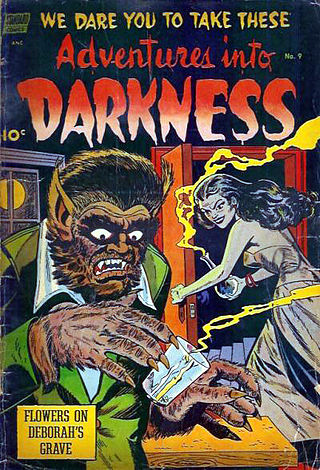
Werewolf fiction denotes the portrayal of werewolves and other shapeshifting therianthropes, in the media of literature, drama, film, games and music. Werewolf literature includes folklore, legend, saga, fairy tales, Gothic and horror fiction, fantasy fiction and poetry. Such stories may be supernatural, symbolic or allegorical. A classic cinematic example of the theme is The Wolf Man (1941) which in later films joins with the Frankenstein Monster and Count Dracula as one of the three famous icons of modern day horror. However, werewolf fiction is an exceptionally diverse genre, with ancient folkloric roots and manifold modern re-interpretations.

Dog Soldiers is a 2002 British action horror film written, directed and edited by Neil Marshall in his feature directorial debut. Starring Sean Pertwee, Kevin McKidd, Emma Cleasby and Liam Cunningham, the film follows a squad of soldiers fighting to survive an attack by a pack of werewolves during a military training exercise in the Scottish Highlands.

The Wolf Man is a 1941 American gothic horror film written by Curt Siodmak and produced and directed by George Waggner. The film stars Lon Chaney Jr. in the title role. Claude Rains, Warren William, Ralph Bellamy, Patric Knowles, Bela Lugosi, Evelyn Ankers, and Maria Ouspenskaya star in supporting roles. The title character has had a great deal of influence on Hollywood's depictions of the legend of the werewolf. The film is the second Universal Pictures werewolf film, preceded six years earlier by the less commercially successful Werewolf of London (1935). This film is one of the Universal Monsters movies, and garnered great acclaim for its production.
A werewolf, in folklore, is a person who changes into a wolf.
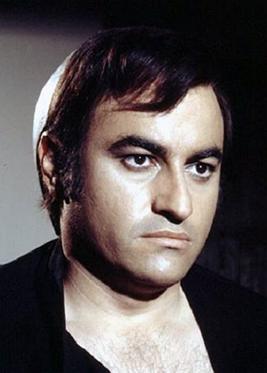
Jacinto Molina Álvarez known by his stage name Paul Naschy, was a Spanish film actor, screenwriter, and director working primarily in horror films. His portrayals of numerous classic horror figures—The Wolfman, Frankenstein's monster, Count Dracula, Quasimodo, Fu Manchu and a mummy—earned him recognition as the Spanish Lon Chaney. Naschy also starred in dozens of action films, historical dramas, crime films, TV shows and documentaries. He also wrote the screenplays for most of his films and directed a number of them as well, signing many of them "Jacinto Molina". Naschy was bestowed Spain's Gold Medal of Merit in the Fine Arts in 2001.

Werewolf is an American horror series, and one of the original shows in the Fox network's broadcast line-up during its inaugural season of 1987–1988.

Werewolf of London is a 1935 horror film directed by Stuart Walker and starring Henry Hull as the titular werewolf. The supporting cast includes Warner Oland, Valerie Hobson, Lester Matthews, and Spring Byington. Jack Pierce, who is best known for creating the iconic makeup worn by Boris Karloff in the 1931 film Frankenstein, created the film's werewolf makeup. Produced by Universal Pictures, Werewolf of London was the first feature-length werewolf film.
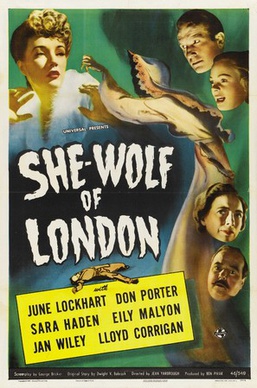
She-Wolf of London is a 1946 American mystery and horror film directed by Jean Yarbrough. It stars June Lockhart and Don Porter. The film is set in London in the early 20th century, where a series of murders have recently occurred. An aunt then tells an innocent young lady that the blood of a werewolf runs in her family and that she is responsible for the deaths. The woman then immediately ends her engagement, leading to her partner to begin investigating the strange case on his own.

La Noche de Walpurgis /Walpurgis Night, is a 1970 Spanish/German horror film starring Paul Naschy, the fifth in his series about the werewolf Waldemar Daninsky. This film was directed by León Klimovsky and written by Paul Naschy, and is generally regarded to have kickstarted the Spanish horror film boom of the 1970s. This was Naschy's all-time most financially successful film. It was also the first of 8 films that he would make with director Leon Klimovsky at the helm.

Blood & Chocolate is a 2007 fantasy-horror film directed by Katja von Garnier. It was written by Ehren Kruger and Christopher B. Landon and is loosely inspired by Annette Curtis Klause's 1997 young adult novel of the same name.
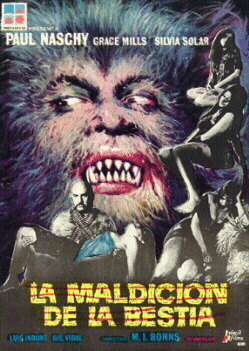
La Maldicion de la Bestia is a 1975 Spanish horror film that is the eighth in a long series about the werewolf Count Waldemar Daninsky, played by Paul Naschy. The film has also been known as The Werewolf and the Yeti, Night of the Howling Beast and Hall of the Mountain King. This film ignored the events from the earlier Hombre Lobo films and provided an all-new origin for Waldemar's lycanthropy, having the curse transmitted to Waldemar by the bites of two female werewolves. A yeti is woven into the storyline, but in this film the Yeti is not the direct cause of Waldemar's lycanthropy. Fernando Florido and Adolfo Ponte handled the special effects throughout the film.
Au Secours! is a 1924 short French silent comedy horror film, directed by Abel Gance and starring Max Linder. The French title translates into English as "Help!". The film is also known as The Haunted House in some reference books. The film was made on a dare, with Gance filming the entire project in three days, with the help of his friend, actor Max Linder. Linder had just returned to France after several years of trying to start an acting career in Canada.

Bodily mutilation in film refers to practical effects implemented on a film set during production, in contrast to special effects, which are applied in post-production. The primary objective is to visually depict physical trauma endured by a character, aiming to elicit emotional responses from the audience and foster empathy towards the character. Bodily mutilation is most usually portrayed in the context of horror, but is also used in other genres, such as medical dramas or war films. It is used primarily either to shock or fascinate the audience of a film, or to add a sense of realism. Improved special effects in recent decades have seen an increase in the prevalence of bodily mutilation in film.

The Wolf Gift is the thirty-first novel by Gothic writer Anne Rice, published in February 2012 by Random House. The novel tells the tale of Reuben Golding, a well to do journalist at the fictional San Francisco Observer who is attacked by and turned into a werewolf. He spends the duration of the story fleeing the authorities, the media, and DNA analysts.

Strippers vs Werewolves is a 2012 British comedy horror film directed by Jonathan Glendening. The screenplay was written by Phillip Barron and Pat Higgins. The main cast includes Ali Bastian, Martin Compston, Alan Ford, Marc Baylis, Billy Murray, Simon Phillips, Barbara Nedeljáková, Coralie Rose, Nick Nevern, and Adele Silva. Some actors, such as Robert Englund and Sarah Douglas, had a small part in the film. The film was released on DVD and Blu-ray. It has received mixed reception with praise for its entertainment value and complaints about its plot.
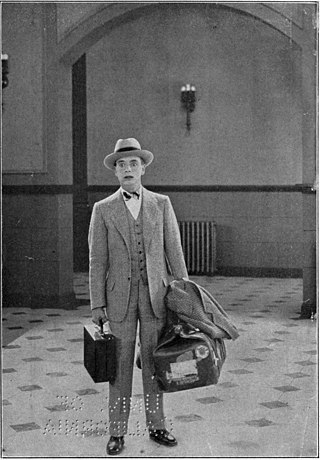
Seven Keys to Baldpate is a lost 1925 American silent comedy mystery film based on the 1913 mystery novel by Earl Derr Biggers and 1913 play by George M. Cohan. Previously made in Australia in 1916 and by Paramount in 1917, this version was produced by, and starred, Douglas MacLean and was directed by Fred C. Newmeyer. Out of seven film adaptations of the story made between 1916 and 1983, this version is the only one that is now considered lost. The story was remade again later in 1929, 1935, 1946, and 1947. It was also remade in 1983 under the title House of the Long Shadows, featuring John Carradine, Peter Cushing, Vincent Price, and Christopher Lee.

The Marriage of the Bear is a 1925 Soviet silent horror-fantasy drama film directed by Konstantin Eggert and Vladimir Gardin. It is based on the play with the same name by Anatoli Lunacharsky, which in turn was based on Prosper Mérimée's novella Lokis.















